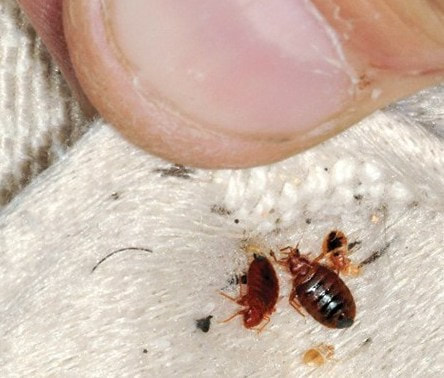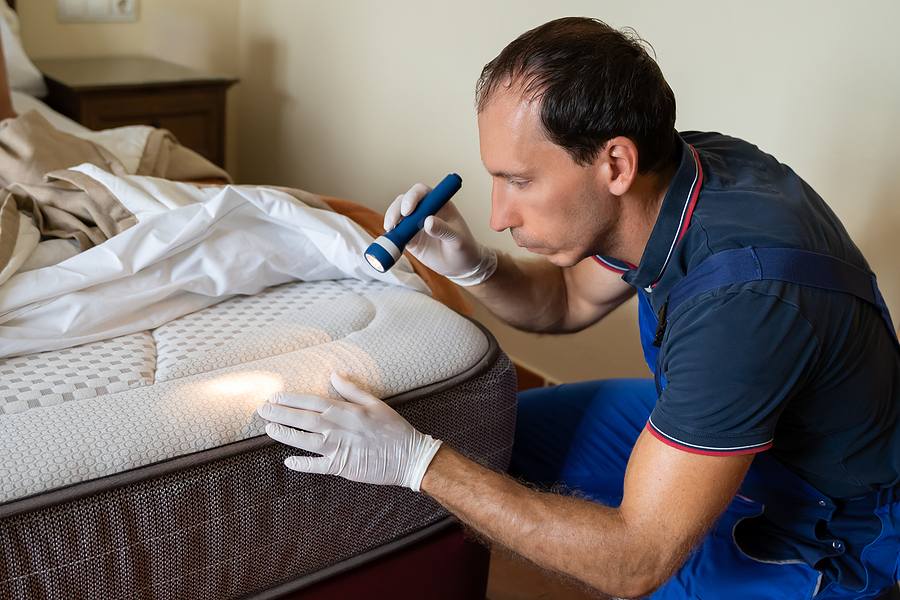Specialist Bed Bug Exterminator: DC Solutions and Heat Treatment
Checking Out the Science Behind Bed Bug Warm Treatments as a Lasting Pest Management Strategy
One such technique that has actually gotten traction in recent years is the usage of warm therapies to fight bed pest problems. The details of just how warm properly eliminates bed pests and the more comprehensive implications for lasting pest monitoring methods make this a subject worth discovering further.
Bed Insect Warmth Treatment Refine

Thermal Death Point for Bed Pests
Revealing bed bugs to elevated temperatures past their thermal resistance variety is essential for achieving reliable removal in heat treatment processes. The thermal fatality factor for bed insects refers to the temperature at which these insects can not endure. Research study shows that bed bugs start to die when subjected to temperature levels over 113 ° F(45 ° C) for a sustained duration. As the temperature level boosts, so does the mortality price of bed pests. At around 118 ° F(48 ° C ), bed bugs start to pass away swiftly, with a mortality price of almost 99% within minutes of exposure. This shows the level of sensitivity of bed pests to high temperature levels and highlights the performance of heat therapies in removing invasions. By getting to and preserving temperatures over the thermal death point for bed insects, pest monitoring specialists can make sure detailed elimination of bed insect populations, consisting of hard-to-reach areas where chemical treatments might be much less reliable. Understanding the thermal death factor for bed pests is important for implementing successful heat therapy approaches and attaining lasting pest monitoring results.
Advantages of Warm Treatments
Having actually established the crucial thermal death point for bed insects, it is important to currently discover the significant benefits that warm therapies offer in successfully getting rid of these resilient insects. One of the main advantages is that warmth can pass through deep right into splits and crevices where bed bugs conceal, making certain that even the most hard-to-reach areas are heated up to deadly temperature levels.
Moreover, warm treatments are environmentally friendly and safe, making them a lasting parasite administration technique. Unlike chemical pesticides, warm therapies do not leave harmful residues that can present risks to human health or the setting. This aspect is especially crucial in sensitive settings such as healthcare facilities, schools, and suburbs where chemical use may not be desirable.
Furthermore, heat treatments have a high success rate in eliminating bed insect infestations in a single treatment, lowering the need for multiple check outs and decreasing disturbance to occupants. This efficiency not just saves time and cash but also offers comfort to those taking care of bed bug problems.
Performance of Warmth Treatment

Study researches have constantly demonstrated the efficiency of warm treatments in accomplishing a high price of bed bug death. Properly conducted warm therapies can get to all the fractures and gaps where bed bugs may be nurturing, making certain a thorough technique to extermination. Heat therapies have actually the included advantage of killing bed pest eggs, which are frequently resistant to typical chemical therapies. In general, the performance of heat therapies in removing bed insect problems makes them a reliable and sustainable parasite management strategy.
Lasting Bug Administration Benefits
Executing lasting insect administration techniques uses long-term advantages for both the atmosphere and public wellness. By utilizing methods such as warm therapies for parasite control, we can reduce the reliance on unsafe chemical pesticides that can have adverse impacts on ecosystems and human health - exterminator. Lasting pest monitoring approaches assist in preserving biodiversity by targeting certain insects without harming non-target microorganisms, thereby keeping a balanced community
Furthermore, sustainable parasite monitoring methods contribute to the general health and wellness of the general public. By lessening exposure to poisonous chemicals used in standard pest control techniques, warmth treatments give a safer option for pest administration in domestic, business, and public spaces. This decrease in chemical use also assists in preventing pesticide deposits from infecting air, water, and soil, guarding environmental high quality.
Verdict
Finally, bed bug warm therapies have actually been shown to be a lasting and reliable insect monitoring strategy. The thermal death point for bed bugs makes them at risk to warm treatments, which have many advantages over conventional chemical therapies. The effectiveness of heat treatments in removing bed pest infestations while decreasing ecological influence highlights the potential of this method as a sustainable solution for insect control.
The bed bug heat treatment process involves raising the temperature within infested areas to a level that efficiently gets exterminator rid of bed insects and their eggs. By reaching and maintaining temperatures above the thermal death factor for bed pests, parasite monitoring specialists can ensure comprehensive elimination of bed pest populaces, consisting of hard-to-reach locations where chemical treatments may be less reliable. One of the key benefits is that warm can penetrate deep into gaps and fractures where bed insects hide, making sure that even the most hard-to-reach areas are heated to dangerous temperature levels. Unlike chemical therapies that may leave behind resistant populaces, warm treatments offer a environmentally pleasant and safe service that can penetrate deep right into furnishings, walls, and other hard-to-reach locations where bed bugs hide.
The thermal fatality factor for bed pests makes them susceptible to warmth therapies, which have numerous advantages over standard chemical therapies.